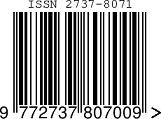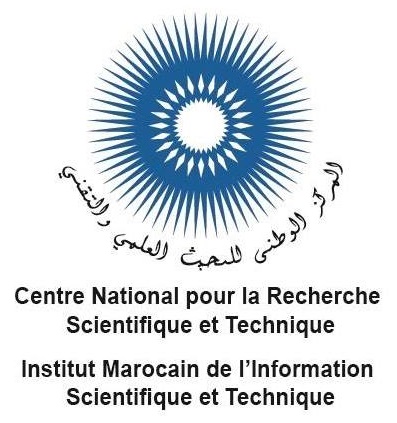The Study of Simulation of RC, RL and RLC Circuits Using Matlab in Teaching
Keywords:
Matlab , Simulation, Electrical circuits , TeachingAbstract
Involvement of simulation in teaching is provide a batter support, more clear and visual operation of complex circuits to the Faculty members of electrcs circuits in classroom teaching. The simulation available for simulation of electrc circuits are MATLAb and C+ and many more. Use of the simulation in classroom teaching is provide an additional support to the Faculty members and its better then the time consuming black board practice. This paper provides a case study of electrcs circuits as RC, RL and RLC in Matlab software. Different electrcs circuit model are prepared on Matlab software and generate simulation voltage forms. This paper is helpful for to find the applications of Matlab in teaching.
Downloads
References
P. Verma., “Circuit Analysis Using Matlab/Simulink®,” International Journal of Enhanced Research in Science Technology & Engineering, vol. 3, 268 , 2014.
H. Le-Huy, “Modeling and simulation of electrical drives using MATLAB/Simulink and Power System Blockset,” 27th Annual Conference of the IEEE Industrial Electronics Society, vol. 3, pp. 1603-1611, 2001.
A.A. Musa, R. Abdel, G. Abdel, H. Anoud, A. Elzain, A.S. Aasim, “Transfer Function and Z-Transform of an Electrical System in MATLAB/Simulink,” European Journal of Mathematics and Statistics, vol. 4, pp. 9-20, 2023. doi:http://dx.doi.org/10.24018/ejmath.2023.4.3.190.
Z. Zhang, C.T. Hansen, M.A.E. Andersen, “Teaching power electronics with a design-oriented, project-based learning method at the technical university of Denmark” IEEE Trans Educ. Vol. 59, pp. 32–38. 2026
S. Bhagat, C. Archana, K. Khade, A. Budukh, A. Bhosale, VK. Mathew, “Simulation of Li-ion Battery using MATLAB-Simulink for Charging and Discharging,” E3S Web of Conferences, vol.353, 03001, 2022. https://doi.org/10.1051/e3sconf/202235303001.
V. F. Pires, “Teaching nonlinear modeling, simulation, and control of electronic power converters using MATLAB/Simulink,” IEEE Trans. Educ, vol. 45, pp. 253–261, 2002.
D. W. Hart, “Circuit simulation as an aid in teaching the principles of power electronics,” IEEE Trans. Educ, vol. 36, pp. 10–16. 1993.
A. Angelo. J. Beltran, “Design of a linear integrated op amp circuit: an alternative solution to differential equation model of rlc circuit,” Lyceum of the Philippines University Research Journal, vol. 2, pp. 49 – 65, 2007.
M. M. Khader, J. F. Gómez-Aguilar, M. Adel, “Numerical study for the fractional RL, RC, and RLC electrical circuits using Legendre pseudo-spectral method,” International Journal of Circuit Theory and Applications, vol. 49, pp. 3266-328, 2021.
R.Y. Kezerashvili, “Teaching RC and RL Circuits Using Computer–supported Experiments,” IERI Procedia, Vol. 2, pp. 609-61, 2012.
R. Banchuin, “On the test of novel constitutive relation of capacitor for electrical circuit analysis: a fractal calculus-based approach,” COMPEL - The international journal for computation and mathematics in electrical and electronic engineering, vol. 42, pp, 506-525. 2023.
P. Moonmuang, M. Faseehuddin, T. Pukkalanun, N. Herencsar, W. Tangsrirat, “VDTA-based floating/grounded series/parallel R-L and R-C immittance simulators with a single grounded capacitor,” AEU - International Journal of Electronics and Communications vol. 160, 154502, 2023.
Y. Liu, L. Chen , W . Xiaobo, A.M. Lopes, C . Fengqi , “Theoretical analysis and experimental verification of fractional-order RC cobweb circuit network,” Chaos, Solitons & Fractals, vol. 172, 113541, 2023.
H. EL Ghzizal, “livre Massar chimie physique 2eme bac science physique chimie, 102-138, 2017.
A. Nazih, H. Elminir, W. E. Raslan, I. L. El-Kalla, “Numerical Simulation of Parallel RLC Model Using Different Fractional Derivative Operators,” Journal of Engineering Research, vol. 7, pp. 108-112. 2023.

Downloads
Published
How to Cite
Issue
Section
License
Copyright (c) 2024 Hassan asnaoui

This work is licensed under a Creative Commons Attribution 4.0 International License.
Copyright on any article in the International Journal of Engineering and Applied Physics is retained by the author(s) under the Creative Commons license, which permits unrestricted use, distribution, and reproduction provided the original work is properly cited.
License agreement
Authors grant IJEAP a license to publish the article and identify IJEAP as the original publisher.
Authors also grant any third party the right to use, distribute and reproduce the article in any medium, provided the original work is properly cited.
Most read articles by the same author(s)
- Hassan asnaoui, Mohammed Khalis, Zouheir Amraoui , Lahcen Ait-Mlouk, Biogas production according to the waste categories , International Journal of Engineering and Applied Physics: Vol. 2 No. 2: May 2022














